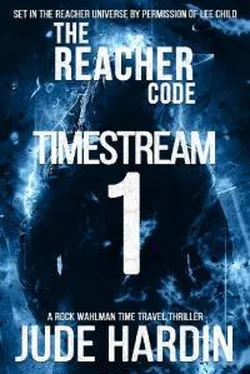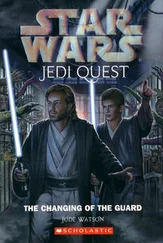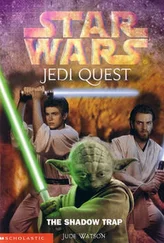“Yes, sir.”
Sheryl gave him the information he’d asked for.
Stahler figured if he ever got tired of being a secret agent, he could move to Hollywood and make it as an actor. He’d gone from concerned surgeon to ill-tempered executive officer without missing a beat. It was the kind of thing he excelled at, the kind of thing that could make or break a mission like this.
Acting might actually be a lot of fun, he thought. Maybe he would check into doing it part time.
He looked at his watch.
29:34…
29:33…
29:32…
He didn’t bother calling Diane Givens. Didn’t see any point in it. He climbed on his motorcycle and consulted a map of the area and headed toward the address he’d gotten from Sheryl, which was only a few miles from the convenience store. If everything went well, Wahlman would be dead in fifteen minutes, and Stahler would be on his way back home.
He couldn’t wait.
10
William Top had exactly one objective for the night: kill Jack Reacher.
It was nothing personal. Reacher just happened to have been born with certain mental and physical qualities that had been attractive to certain men in power in 1983, and he just happened to have nice robust blood cells that had worked well with the human cloning process—with the experiments that had resulted in the production of two genetic duplicates in 2057 and another five thousand in 2083.
It was the clones that Top needed to get rid of, specifically the ones from 2083, the ones the Army had produced for their super-secret SuperSoldier program. With so many of them, and with them being scattered across the country the way they were, the only feasible way to eliminate them was to eliminate Reacher before the blood used to produce them was drawn.
It was nothing personal against the clones either. It was just that Top was in a position to make more money without them around. A lot more money. Enough to make it worth the potential risks that went along with tampering with the past. Top was aware of these risks, but the opportunity that had presented itself was a once-in-a-lifetime kind of thing, and he wasn’t about to let it slip through his fingers. Anyway, how much historical damage could you do by killing just one guy? It wasn’t like Reacher had ever accomplished anything of any significance. Not that Top knew of, anyway. Reacher had been an officer in the Army—a career with the 110 thSpecial Investigations Unit that had been distinguished but by no means perfect, a career that had been snipped short for reasons that weren’t exactly clear.
After the Army, Reacher had become a drifter and a trouble magnet. Maybe he had done some good deeds along the way, but if so they hadn’t been very well documented. The details that Top had been able to come up with were sketchy, to say the least. Which seemed like a good indicator of Reacher’s relative unimportance, historically speaking. Which had ultimately sealed the deal for Top. One way or another, Reacher was going to die before that blood was drawn—tonight, if everything went well. And if everything did not go well, Top had a backup plan, and a backup to the backup. Reacher was a goner, and Top was going to be rich. No doubt about it. End of story. Happily ever after.
Top had decided early on that he would carry out this first crucial mission himself. All of the trial runs had been performed, and all of the intelligence was in, and tonight was definitely the night. Top knew exactly where Reacher was going to be, and he knew exactly how vulnerable he was at the moment, and he knew exactly how easy it was going to be to get to him.
Everything was lining up just right.
Top was getting excited just thinking about it.
Top’s laboratory was in a cinderblock building the size of a two-car garage. Located near a small village about a hundred kilometers south of Bogota, Colombia, the space had once been used to process and package coca leaves. The leaves were treated and tied into bundles and wrapped with butcher paper, and then they were transported to deeper parts of the jungle, where they were used in the production of cocaine. Top had gotten a good deal on the building, and the diesel generators that went along with it, and he’d gotten a good deal on the 1976 Renault Le Car that now housed his first working time travel device.
The guys in the shop affectionately referred to the vehicle as Le Machine.
Top had bought the little car from a guy in Bogata. It had belonged to the guy’s great grandfather. The guy had needed some cash, and Top had needed the car, and after a few minutes of dickering, a price had been agreed on, and that was that. Parked in a garage and covered with a sheet of canvas for about a hundred years, the paint and the glass and the chrome were still in relatively good shape. Top had replaced the tires right away and had towed the vehicle to his place out in the jungle. The original gasoline engine had been replaced with a high-performance solar-magnetic hybrid, and most of the interior had been ripped out to make room for the electronics. There were toggle switches and mechanical dials and gauges and wiring bundles secured with duct tape. It wasn’t pretty, but it worked. It would get Top to where he needed to go, and that was all that mattered right now. There would be time—and money—for nicer machines later, ones that would rival those being built by Top’s former employer, the Federal Commission on Yesteryears and Years to Come.
Abandoning his position with the FCYYC wasn’t something Top had done on a whim. He’d thought about it for a long time. It was the kind of job that most scientists could only dream about. Secure, with flexible work hours and practically unlimited funding. A generous compensation package, full benefits, access to a lab the size of a small city. It was all Top had ever wanted out of life, until suddenly it wasn’t.
Some of the men and women Top had known in graduate school were making big bucks out in the private sector. They were good scientists. They published regularly and were respected among their peers, and a couple of them had even been on the short list for the Nobel Prize one year. They were making a lot of money and getting a lot of publicity, and Top wanted some of that too, and it was hard to come by at the agency, especially since Victor had taken over as Director.
So after giving it a lot of thought and finally coming to the conclusion that it was the only way he was ever going to get the kind of money and recognition he deserved, Top had walked away from the FCYYC one day and had never gone back.
And he’d taken some things with him.
Along with dozens of schematics and blueprints, and about ten thousand pages of research data—all of it classified and heavily encrypted—Top had taken an extensive list of sequencing codes and timestream frequencies. The codes and frequencies were essential. Without them, attempting to travel to a particular place and time would have been like attempting to find a particular grain of sand on the beach. It just wasn’t going to happen.
Top had loaded everything onto a flash drive and had hidden the drive between his butt cheeks, just in case security stopped him for a random pocket check on his way out of the building. It didn’t happen often, but it happened, even among senior personnel. It was more about absentmindedness than thievery, more about stuffing a paper memo into your pocket and forgetting to feed it into the shredder before leaving for the day. Scientists were notorious for that kind of thing. When you’re focused—to the point of absolute absorption—on a mathematical formula that covers an entire wall, it’s easy to forget about the little specialty tool you dropped into your shirt pocket that morning. Or the packet of pharmaceuticals. Or whatever. That kind of stuff was no big deal. It would get you a slap on the wrist at most. Getting caught with Generation Seven classified material was a different story. Only a handful of people had access to it, and there were safeguards in place to prevent it from being erroneously routed or copied. You could be executed right there on the premises if you were found guilty of espionage, so nobody actually ever tried to steal anything from the FCYYC.
Читать дальше












